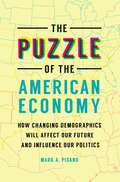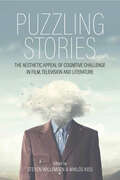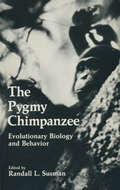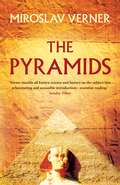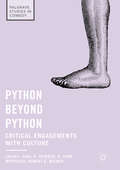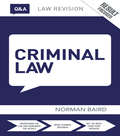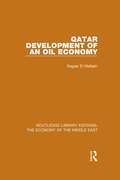- Table View
- List View
Putting Wealth to Work: Philanthropy for Today or Investing for Tomorrow?
by Joel L. FleishmanBy 2025, Americans will likely be donating over half a trillion dollars annually to nonprofit organizations. Those philanthropic gifts will transform significant parts of America's civic sector landscape.Philanthropy is entering an era of unprecedented growth and innovation. Established foundations such as Ford and Rockefeller are doubling down on programs tackling long-simmering problems, including global inequality, less-than-stellar education, and uneven access to health care. Many foundations are engaging in advocacy on controversial issues, exploring venture philanthropy solutions, and experimenting with impact investing. And philanthropists such as Bill Gates, Warren Buffett, New York's high-profile financiers, and Silicon Valley's billionaires are planning to put their wealth to work as never before: Mark Zuckerberg and Priscilla Chan recently pledged to donate 99 percent of their Facebook shares during their lifetimes, and nearly 150 others have signed the Giving Pledge to increase dramatically their "giving while living."In Putting Wealth to Work, Joel L. Fleishman provides expert analysis of contemporary philanthropy, offering invaluable insight for those engaging with and affected by charitable foundations. This is the fascinating and definitive account of philanthropy today, and an indispensable guide to understanding its inner workings, impact, and expansive potential.
The Puzzle of Prison Order: Why Life Behind Bars Varies Around the World
by David SkarbekMany people think prisons are all the same-rows of cells filled with violent men who officials rule with an iron fist. Yet, life behind bars varies in incredible ways. In some facilities, prison officials govern with care and attention to prisoners' needs. In others, officials have remarkably little influence on the everyday life of prisoners, sometimes not even providing necessities like food and clean water. Why does prison social order around the world look so remarkably different? In The Puzzle of Prison Order, David Skarbek develops a theory of why prisons and prison life vary so much. He finds that how they're governed-sometimes by the state, and sometimes by the prisoners-matters the most. He investigates life in a wide array of prisons-in Brazil, Bolivia, Norway, a prisoner of war camp, England and Wales, women's prisons in California, and a gay and transgender housing unit in the Los Angeles County Jail-to understand the hierarchy of life on the inside. Drawing on economics and a vast empirical literature on legal systems, Skarbek offers a framework to not only understand why life on the inside varies in such fascinating and novel ways, but also how social order evolves and takes root behind bars.
PUZZLE OF PRISON ORDER C: Why Life Behind Bars Varies Around the World
by David SkarbekMany people think prisons are all the same-rows of cells filled with violent men who officials rule with an iron fist. Yet, life behind bars varies in incredible ways. In some facilities, prison officials govern with care and attention to prisoners' needs. In others, officials have remarkably little influence on the everyday life of prisoners, sometimes not even providing necessities like food and clean water. Why does prison social order around the world look so remarkably different? In The Puzzle of Prison Order, David Skarbek develops a theory of why prisons and prison life vary so much. He finds that how they're governed-sometimes by the state, and sometimes by the prisoners-matters the most. He investigates life in a wide array of prisons-in Brazil, Bolivia, Norway, a prisoner of war camp, England and Wales, women's prisons in California, and a gay and transgender housing unit in the Los Angeles County Jail-to understand the hierarchy of life on the inside. Drawing on economics and a vast empirical literature on legal systems, Skarbek offers a framework to not only understand why life on the inside varies in such fascinating and novel ways, but also how social order evolves and takes root behind bars.
The Puzzle of the American Economy: How Changing Demographics Will Affect Our Future and Influence Our Politics
by Mark A. PisanoThis book explains how sweeping demographic changes have resulted in the ineffectiveness of recent monetary and fiscal policies, and it identifies corrective actions that will start to reverse the trends of low economic growth and widespread government deficits.The field of demographics does not focus on the economic impacts and the funding issues resulting from demographic change. Similarly, economics does not take into account demographic changes. The omissions in both fields are negatively impacting the nation: income reductions caused by demographic changes that have not been accounted for are so large that current fiscal policies are not able to mitigate them. The Puzzle of the American Economy: How Changing Demographics Will Affect Our Future and Influence Our Politics exposes the factors that are undermining the nation's prospects for improving the rate of economic growth and keeping up with citizens' needs for government-provided services.Author Mark A. Pisano explains the hidden drag on the economy that has led to the ineffectiveness of recent monetary and fiscal policies, how uncertainty in economic policymaking is affecting America politically as well as at the individual household level, and why those who are adversely impacted are becoming politically disaffected. He also presents an agenda for corrective individual action. Readers will understand how the results of changes in demographics will last for decades and extend beyond the United States to many developed countries—particularly Japan and nations in Europe—as well as to some developing countries. The book will be of value to students studying macro and micro economics; those in public policy at all levels of government, public administration, and governmental budgeting; and anyone attempting to understand the current dilemma in economic policymaking and our disjointed political process.
The Puzzle of the American Economy: How Changing Demographics Will Affect Our Future and Influence Our Politics
by Mark A. PisanoThis book explains how sweeping demographic changes have resulted in the ineffectiveness of recent monetary and fiscal policies, and it identifies corrective actions that will start to reverse the trends of low economic growth and widespread government deficits.The field of demographics does not focus on the economic impacts and the funding issues resulting from demographic change. Similarly, economics does not take into account demographic changes. The omissions in both fields are negatively impacting the nation: income reductions caused by demographic changes that have not been accounted for are so large that current fiscal policies are not able to mitigate them. The Puzzle of the American Economy: How Changing Demographics Will Affect Our Future and Influence Our Politics exposes the factors that are undermining the nation's prospects for improving the rate of economic growth and keeping up with citizens' needs for government-provided services.Author Mark A. Pisano explains the hidden drag on the economy that has led to the ineffectiveness of recent monetary and fiscal policies, how uncertainty in economic policymaking is affecting America politically as well as at the individual household level, and why those who are adversely impacted are becoming politically disaffected. He also presents an agenda for corrective individual action. Readers will understand how the results of changes in demographics will last for decades and extend beyond the United States to many developed countries—particularly Japan and nations in Europe—as well as to some developing countries. The book will be of value to students studying macro and micro economics; those in public policy at all levels of government, public administration, and governmental budgeting; and anyone attempting to understand the current dilemma in economic policymaking and our disjointed political process.
Puzzles and Essays from 'The Exchange': Tricky Reference Questions
by Charles R AndersonWho said that? When did that happen? Where the heck does that thing come from? Was that French, or what? What's that supposed to mean?For 35 years, librarians in the United States and other countries sent puzzles they could not solve locally to “The Exchange,” a column for reference librarians appearing in RQ (and later, RUSQ), the official journal of the Reference and User Services Division of the ALA. Other readers often furnished the answers--sometimes years or even decades later! Puzzles and Essays from "The Exchange" organizes those perplexing questions and answers into a reader-friendly reference format, embellished with essays that appeared in the column over the last fifteen years of its publication.This unique collection of questions and answers that stumped librarians on four continents over a 35-year period comes complete with authoritative bibliographic citations. It also contains an extensive subject, person, and keyword index, providing easy access to the material.Packed with fascinating information, little-known trivia, and hard-to-find facts, Puzzles and Essays from "The Exchange" is a wonderful reference source, answering difficult questions about: the origins of common--and not-so-common-customs, like giving engagement rings, driving on the right or left side of the road, tying yellow ribbons around trees in memory of captives, leg shaving, visits from the “Tooth Fairy,” and much, much more! the origins of words, phrases, and terms that don&’t, when taken literally, make much sense the origins of popular sayings--The grass is always greener; The whole nine yards; It ain't over until the fat lady sings; Close but no cigar; Going down the tube; Light at the end of the tunnel; Katy, bar the door; Goodbye, cruel world; etc. the sources of famous quotations--both spurious and real! the sources of poetry fragments and bits of verse that have become part of the popular lexicon hard-to-find biographical information-from George Washington Carver's many uses for the peanut and the sweet potato to the name of Paul Revere's horse to the truth about the “let them eat cake” story attributed to Marie Antoinette trivia and miscellany--how lullabies began; why a yawn is contagious when a sneeze is not; what the names of the monkeys in The Wizard of Oz were; why pigeons bob their heads when they walk; what the vital statistics of the Venus de Milo are; and much more! the history of “The Exchange” itself!Puzzles and Essays from "The Exchange" will also challenge you with a list of so-far unanswered questions, unidentified quotations, and popular sayings whose origins are still generally unknown. Perhaps you&’ll be the one to answer the riddles that stumped the editors and readers of “The Exchange!”</ul
Puzzles and Essays from 'The Exchange': Tricky Reference Questions
by Charles R AndersonWho said that? When did that happen? Where the heck does that thing come from? Was that French, or what? What's that supposed to mean?For 35 years, librarians in the United States and other countries sent puzzles they could not solve locally to “The Exchange,” a column for reference librarians appearing in RQ (and later, RUSQ), the official journal of the Reference and User Services Division of the ALA. Other readers often furnished the answers--sometimes years or even decades later! Puzzles and Essays from "The Exchange" organizes those perplexing questions and answers into a reader-friendly reference format, embellished with essays that appeared in the column over the last fifteen years of its publication.This unique collection of questions and answers that stumped librarians on four continents over a 35-year period comes complete with authoritative bibliographic citations. It also contains an extensive subject, person, and keyword index, providing easy access to the material.Packed with fascinating information, little-known trivia, and hard-to-find facts, Puzzles and Essays from "The Exchange" is a wonderful reference source, answering difficult questions about: the origins of common--and not-so-common-customs, like giving engagement rings, driving on the right or left side of the road, tying yellow ribbons around trees in memory of captives, leg shaving, visits from the “Tooth Fairy,” and much, much more! the origins of words, phrases, and terms that don&’t, when taken literally, make much sense the origins of popular sayings--The grass is always greener; The whole nine yards; It ain't over until the fat lady sings; Close but no cigar; Going down the tube; Light at the end of the tunnel; Katy, bar the door; Goodbye, cruel world; etc. the sources of famous quotations--both spurious and real! the sources of poetry fragments and bits of verse that have become part of the popular lexicon hard-to-find biographical information-from George Washington Carver's many uses for the peanut and the sweet potato to the name of Paul Revere's horse to the truth about the “let them eat cake” story attributed to Marie Antoinette trivia and miscellany--how lullabies began; why a yawn is contagious when a sneeze is not; what the names of the monkeys in The Wizard of Oz were; why pigeons bob their heads when they walk; what the vital statistics of the Venus de Milo are; and much more! the history of “The Exchange” itself!Puzzles and Essays from "The Exchange" will also challenge you with a list of so-far unanswered questions, unidentified quotations, and popular sayings whose origins are still generally unknown. Perhaps you&’ll be the one to answer the riddles that stumped the editors and readers of “The Exchange!”</ul
Puzzling Stories: The Aesthetic Appeal of Cognitive Challenge in Film, Television and Literature
by Steven Willemsen Miklós KissMany films and novels defy our ability to make sense of the plot. While puzzling storytelling, strange incongruities, inviting enigmas and persistent ambiguities have been central to the effects of many literary and cinematic traditions, a great deal of contemporary films and television series bring such qualities to the mainstream—but wherein lies the attractiveness of perplexing works of fiction? This collected volume offers the first comprehensive, multidisciplinary, and trans-medial approach to the question of cognitive challenge in narrative art, bringing together psychological, philosophical, formal-historical, and empirical perspectives from leading scholars across these fields.
Puzzling Stories: The Aesthetic Appeal of Cognitive Challenge in Film, Television and Literature
by Steven Willemsen Miklós KissMany films and novels defy our ability to make sense of the plot. While puzzling storytelling, strange incongruities, inviting enigmas and persistent ambiguities have been central to the effects of many literary and cinematic traditions, a great deal of contemporary films and television series bring such qualities to the mainstream—but wherein lies the attractiveness of perplexing works of fiction? This collected volume offers the first comprehensive, multidisciplinary, and trans-medial approach to the question of cognitive challenge in narrative art, bringing together psychological, philosophical, formal-historical, and empirical perspectives from leading scholars across these fields.
Puzzling Stories: The Aesthetic Appeal of Cognitive Challenge in Film, Television and Literature
by Steven Willemsen Miklós KissMany films and novels defy our ability to make sense of the plot. While puzzling storytelling, strange incongruities, inviting enigmas and persistent ambiguities have been central to the effects of many literary and cinematic traditions, a great deal of contemporary films and television series bring such qualities to the mainstream—but wherein lies the attractiveness of perplexing works of fiction? This collected volume offers the first comprehensive, multidisciplinary, and trans-medial approach to the question of cognitive challenge in narrative art, bringing together psychological, philosophical, formal-historical, and empirical perspectives from leading scholars across these fields.
Puzzling Stories: The Aesthetic Appeal of Cognitive Challenge in Film, Television and Literature
by Steven Willemsen Miklós KissMany films and novels defy our ability to make sense of the plot. While puzzling storytelling, strange incongruities, inviting enigmas and persistent ambiguities have been central to the effects of many literary and cinematic traditions, a great deal of contemporary films and television series bring such qualities to the mainstream—but wherein lies the attractiveness of perplexing works of fiction? This collected volume offers the first comprehensive, multidisciplinary, and trans-medial approach to the question of cognitive challenge in narrative art, bringing together psychological, philosophical, formal-historical, and empirical perspectives from leading scholars across these fields.
Puzzling Stories: The Aesthetic Appeal of Cognitive Challenge in Film, Television and Literature
by Steven Willemsen Miklós KissMany films and novels defy our ability to make sense of the plot. While puzzling storytelling, strange incongruities, inviting enigmas and persistent ambiguities have been central to the effects of many literary and cinematic traditions, a great deal of contemporary films and television series bring such qualities to the mainstream—but wherein lies the attractiveness of perplexing works of fiction? This collected volume offers the first comprehensive, multidisciplinary, and trans-medial approach to the question of cognitive challenge in narrative art, bringing together psychological, philosophical, formal-historical, and empirical perspectives from leading scholars across these fields.
The Pygmy Chimpanzee: Evolutionary Biology and Behavior (Evolutionary Biology)
by Randall L. SusmanHistorical Remarks Bearing on the Discovery of Pan paniscus Whether by accident or by design, it was most fortunate that Robert M. Yerkes, the dean of American primatologists, should have been the first scientist to describe the characteristics of a pygmy chimpanzee, which he acquired in August 1923, when he purchased him and a young female companion from a dealer in New York. The chimpanzees came from somewhere in the eastern region of the Belgian Congo and Yerkes esti mated the male's age at about 4 years. He called this young male Prince Chim (and named his female, com mon chimpanzee counterpart Panzee) (Fig. I). In his popular book, Almost Human, Yerkes (1925) states that in all his experiences as a student of animal behavior, "I have never met an animal the equal of this young chimp . . . in approach to physical perfection, alertness, adaptability, and agreeableness of disposition" (Yerkes, 1925, p. 244). Moreover, It would not be easy to find two infants more markedly different in bodily traits, temperament, intelligence, vocalization and their varied expressions in action, than Chim and Panzee. Here are just a few points of contrast. His eyes were black and in his dark face lacked contrast and seemed beady, cold, expressionless. Hers were brown, soft, and full of emotional value, chiefly because of their color and the contrast with her light complexion.
Pynchon and Philosophy: Wittgenstein, Foucault and Adorno
by Martin Paul EvePynchon and Philosophy radically reworks our readings of Thomas Pynchon alongside the theoretical perspectives of Wittgenstein, Foucault and Adorno. Rigorous yet readable, Pynchon and Philosophy seeks to recover philosophical readings of Pynchon that work harmoniously, rather than antagonistically, resulting in a wholly fresh approach.
The Pyramid Builders of Ancient Egypt: A Modern Investigation of Pharaoh's Workforce
by Dr A David Rosalie DavidIn Rosalie David's hands, the Egyptian builders of the pyramids are revealed as simple people, leading ordinary lives while they are engaged on building the great tomb for a Pharoah. This is an engrossing detective story, bringing to the general reader a fascinating picture of a special community that lived in Egypt and built one of the pyramids, some four thousand years ago.
The Pyramid Builders of Ancient Egypt: A Modern Investigation of Pharaoh's Workforce
by Dr A David Rosalie DavidIn Rosalie David's hands, the Egyptian builders of the pyramids are revealed as simple people, leading ordinary lives while they are engaged on building the great tomb for a Pharoah. This is an engrossing detective story, bringing to the general reader a fascinating picture of a special community that lived in Egypt and built one of the pyramids, some four thousand years ago.
The Pyramids: Their Archaeology And History
by Miroslav VernerHow did a people who lived nearly five thousand years ago, who knew neither iron nor bronze and who lacked mastery of elementary rules of calculation, manage to construct enormous stone structures with a precision seldom matched even by modern architecture? By one of the world's leading Egyptologists, The Pyramids sets our knowledge of these unique, haunting and perennially fascinating edifices into the context of ancient Egyptian culture and politics.
Pythagorean Women: Their History and Writings
by Sarah B. PomeroyIn Pythagorean Women, classical scholar Sarah B. Pomeroy discusses the groundbreaking principles that Pythagoras established for family life in Archaic Greece, such as constituting a single standard of sexual conduct for women and men. Among the Pythagoreans, women played an important role and participated actively in the philosophical life. While Pythagoras encouraged women to be submissive to men, his reasoning was based on the desire to preserve harmony in the home. Pythagorean Women provides English translations of all the earliest extant examples of literary Greek prose by Neopythagorean women, shedding light on their attitudes about marriage, the home, music, and the cosmos. Pomeroy sets the Pythagorean and Neopythagorean women vividly in their historical, ecological, and intellectual contexts, illustrated with original photographs of sites and artifacts known to these women.
Python beyond Python: Critical Engagements with Culture
by Paul N. Reinsch B. Lynn Whitfield Robert G. WeinerThis collection of original, interdisciplinary essays addresses the work of Monty Python members beyond the comedy show, films, and live performances. These men are prolific creators in a variety of artistic realms beyond the confines of the comedy troupe. Their work as individuals, before and after coming together as Monty Python, demonstrates a restless curiosity about culture that embraces absurdity but seldom becomes cynical. Python members collectively and individually create unique approaches to theatre, film, video games, comic books, business training videos and more. Python Beyond Python increases our understanding of this often neglected work and the meanings of Monty Python.
Python beyond Python: Critical Engagements with Culture
by Paul N. Reinsch B. Lynn Whitfield Robert G. WeinerThis collection of original, interdisciplinary essays addresses the work of Monty Python members beyond the comedy show, films, and live performances. These men are prolific creators in a variety of artistic realms beyond the confines of the comedy troupe. Their work as individuals, before and after coming together as Monty Python, demonstrates a restless curiosity about culture that embraces absurdity but seldom becomes cynical. Python members collectively and individually create unique approaches to theatre, film, video games, comic books, business training videos and more. Python Beyond Python increases our understanding of this often neglected work and the meanings of Monty Python.
Q&A Criminal Law: Q And A Criminal Law 2011-2012 (Questions and Answers)
by Norman BairdRoutledge Q&As give you the tools to practice and refine your exam technique, showing you how to apply your knowledge to maximum effect in an exam situation. Each book contains up to fifty essay and problem-based questions on the most commonly examined topics, complete with expert guidance and fully worked model answers. These books provide you with the skills you need for your exams by: Helping you to be prepared: each title in the series has an introduction presenting carefully tailored advice on how to approach assessment for your subject Showing you what examiners are looking for: each question is annotated with both a short overview on how to approach your answer, as well as footnoted commentary that demonstrate how model answers meet marking criteria Offering pointers on how to gain marks, as well as what common errors could lose them: ‘Aim Higher’ and ‘Common Pitfalls’ offer crucial guidance throughout Helping you to understand and remember the law: diagrams for each answer work to illuminate difficult legal principles and provide overviews of how model answers are structured Books in the series are also supported by a Companion Website that offers online essay-writing tutorials, podcasts, bonus Q&As and multiple-choice questions to help you focus your revision more effectively. Criminal Law Q&A covers the general principles of criminal law, homicide, non-fatal offences against the person and sexual offences, general defences, modes of participation, inchoate offences and vicarious liability, and offences against property.
Q&A Criminal Law (Questions and Answers)
by Norman BairdRoutledge Q&As give you the tools to practice and refine your exam technique, showing you how to apply your knowledge to maximum effect in an exam situation. Each book contains up to fifty essay and problem-based questions on the most commonly examined topics, complete with expert guidance and fully worked model answers. These books provide you with the skills you need for your exams by: Helping you to be prepared: each title in the series has an introduction presenting carefully tailored advice on how to approach assessment for your subject Showing you what examiners are looking for: each question is annotated with both a short overview on how to approach your answer, as well as footnoted commentary that demonstrate how model answers meet marking criteria Offering pointers on how to gain marks, as well as what common errors could lose them: ‘Aim Higher’ and ‘Common Pitfalls’ offer crucial guidance throughout Helping you to understand and remember the law: diagrams for each answer work to illuminate difficult legal principles and provide overviews of how model answers are structured Books in the series are also supported by a Companion Website that offers online essay-writing tutorials, podcasts, bonus Q&As and multiple-choice questions to help you focus your revision more effectively. Criminal Law Q&A covers the general principles of criminal law, homicide, non-fatal offences against the person and sexual offences, general defences, modes of participation, inchoate offences and vicarious liability, and offences against property.
Qanat Knowledge: Construction and Maintenance
by Ali Asghar Semsar Yazdi Majid Labbaf KhaneikiThis book offers a ready solution for those who wish to learn more about this fascinating part of our water history and makes accessible to the wider world the traditional knowledge gained from building and maintaining qanats for more than 2,500 years. There is much more here than a summary of the nature and distribution of qanats, and a more extensive journey through the philosophy, methods, tools, and terminology of qanat design and digging than previously assembled. Where does one begin to dig to ensure that the qanat tunnel will flow with water? How are practical considerations of landscape factored into the design? How are water quality and discharge measured? How does excavation proceed through bedrock and unconsolidated soil and how is this knowledge of geology and pedology acquired? How are vertical wells and tunnels excavated to maintain proper air supply, light, and water flow? How does one deal with special problems like tunnel collapse, the accumulation of gasses and vapors, and the pooling of water during construction? How are tools and gauges designed, maintained, and used? How have qanats been incorporated into other structures like watermills, reservoirs, ice houses, and irrigation networks? And how are qanats cleaned, extended, maintained through the ages, and incorporated into modern water supplies? The great contribution of this work is the story it tells of the ingenuity and practical skills of the qanat masters who for centuries and generations have cut an uncountable number of tunnels through bedrock and alluvium using hand tools and homespun solutions to problems that would vex the most experienced university-trained engineers.
Qatar: Development of an Oil Economy (Routledge Library Editions: The Economy of the Middle East)
by Ragaei el MallakhNo region in the world has seen so much development activity in the last ten years as the Gulf area. Since ‘black gold’ catapulted the oil-producing countries into the limelight of the international political and economic scene, there has been a proliferation of studies on the larger exporting states. However, many of the so-called ‘small countries’ have been neglected in this exercise. This book presents the first detailed examination of the bases and extent of economic development in Qatar and considers the need to translate the petroleum-generated growth into viable, self-sustained development. Qatar, though not one of the oil ‘giants’, was first in the field of oil development and exhibits a number of special features not shared by its Gulf neighbours: for example in pre-oil boom days it was already in advance of many other Gulf states in the field of education; it has a modest agriculture sector and there is a comparatively strong attachment to the land; and finally it has played an important role in OPEC as a member of the ‘moderate price’ camp. The individual chapters trace the development of the oil industry, outline public financing and economic policy and sketch the issues involved in industrialisation, absorptive capacity and agricultural development. Examination is made of the social and physical infrastructure as well as money and banking, and the international linkages in trade, foreign aid, economic cooperation efforts and investment opportunities are elucidated. Planners in Qatar know that their revenue base in petroleum is finite, and thus investment of present surplus needs careful planning. The book therefore also outlines current government priorities and suggests areas for future investments. First published in 1979.


